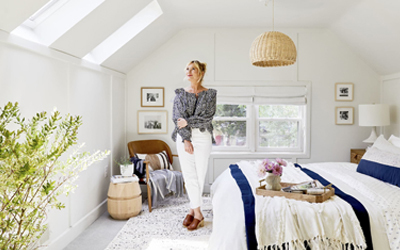Social Media
Influencer Marketing
It’s no secret: Influencers are a key piece of the marketing strategy puzzle. Partnering with a prominent brand champion can grow your organic reach, give you a deeper connection with your audience and even drive product innovation. Especially in the home and building category, the visual platforms of Instagram, YouTube and Facebook have helped influencers connect with followers and build a real-time system of feedback between influencer, brand and viewer — and smart brands are capitalizing on it.
We talked with Matt Risinger, an Austin-based builder, blogger and influencer partner of multiple building product manufacturers, about the importance of influencer marketing today and what we might expect for years to come.
1. Why do you think influencers have such a strong influence on people in general? Specific to homebuilding? Specific to your audience?
I think it’s because of the ability for social media to allow for a connection with real people. When I was a kid, the only builder I knew was Tom Silva [host of PBS’ “This Old House”], and the only way I was able to learn from him was by watching a 30-minute, fully edited TV show once a week, at a very specific time. Nowadays, with social media, no matter what you’re interested in, there are people out there who have very specific knowledge about different topics. It can be very niche, but it’s all accessible — you can watch it on YouTube.
I think the same is true when we talk about “influencers,” which I never really heard as a term until just a few years ago. Now, instead of a TV show, people can watch my YouTube videos or check out my Instagram feed and get direct feedback from someone they feel like they know and trust for recommendations on best practices, products or any number of things that can help them in their job, hobby or personal life.
For the homebuilding category specifically, an influencer’s value boils down to a level of apprenticeship and mentoring. We really don’t have an apprentice program in our trade, and we also, as a society, have lost a little bit of our desire to be or have personal mentors. We’ve gotten busy and away from one-on-one mentoring, but part of being an influencer is our ability to, sort of, mentor at a distance — that’s what I would chalk influencers up to in some respects. They are mentors in the sense that they are educating through their own channel. There’s less ability, maybe, for followers to ask questions, but also more ability for them to go back and search for something I did three years ago and maybe find the answer to their question. It’s an interesting middle ground between watching Tom Silva on TV and taking another builder out to lunch.
2. How do influencers impact customer decisions?
In general, influencers can have quite an impact on the marketplace because there are consumers out there who are researching more and more. Across my channels, I get massive feedback from people who are in the “I’m going to build a house” category and have been researching videos to learn everything they can about the process. Their mentality is, if they are going to spend the money, they are going to do it well. We’re able to help people in a tangible way to build a better house.


